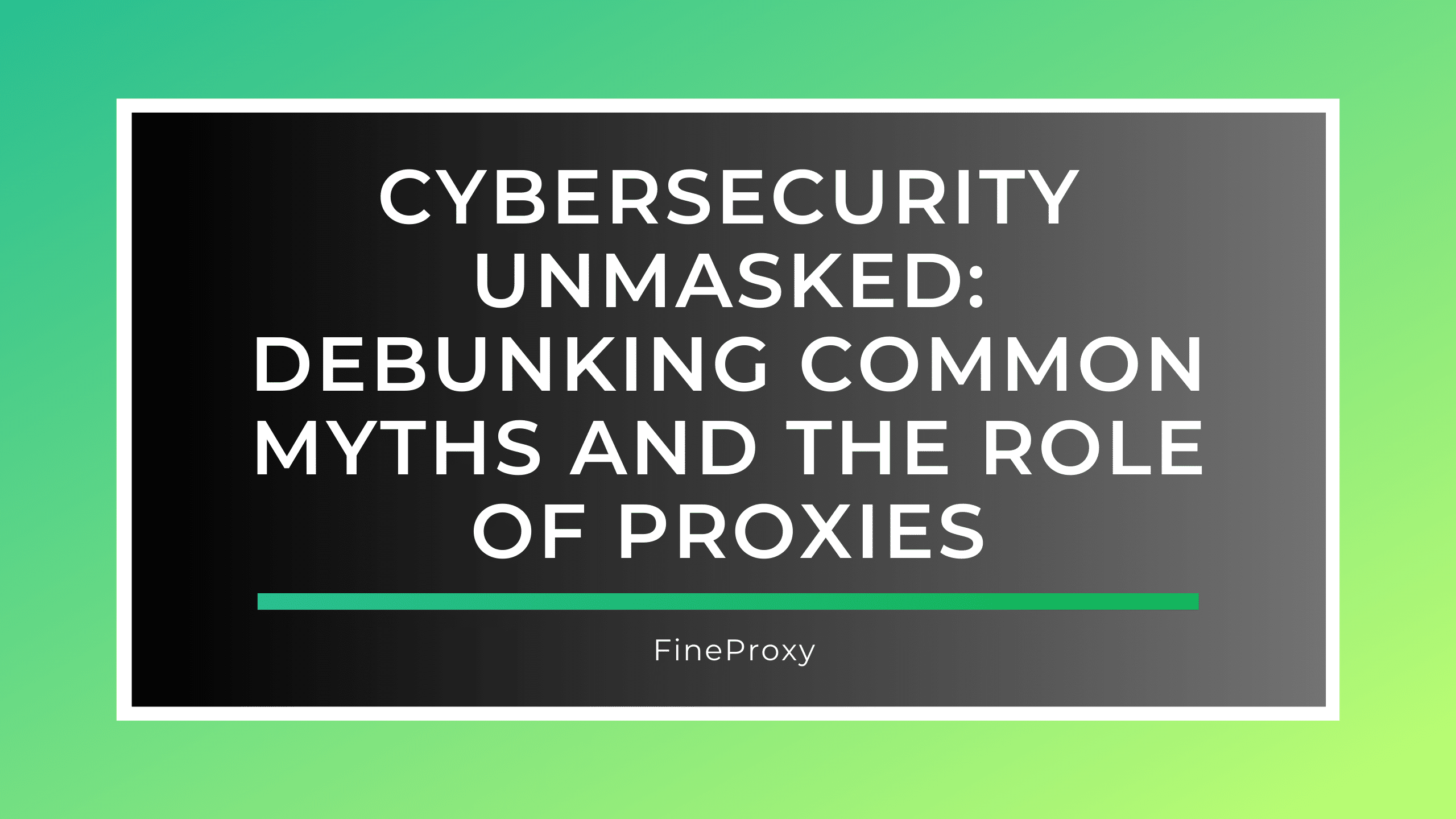
In an age where digital landscapes are rapidly evolving, the importance of robust cybersecurity measures cannot be overstated. However, many myths about online security persist, leading to suboptimal protective strategies. This article delves into the most pervasive cybersecurity myths, sheds light on the actual risks, and explores how incorporating proxies can bolster cybersecurity strategies effectively.

Common Cybersecurity Myths Debunked
Myth 1: Small Businesses Are Not Targets for Cyberattacks
Contrary to popular belief, small businesses are frequently targeted by cybercriminals due to their often weaker security protocols. According to Verizon’s 2022 Data Breach Investigations Report, 28% of breaches involved small businesses. This highlights the critical need for all businesses, regardless of size, to invest in strong cybersecurity measures.
Myth 2: Antivirus Software Offers Complete Protection
While antivirus is a crucial element of basic cybersecurity, it does not provide a comprehensive solution. Cyber threats such as phishing attacks, insider threats, and advanced persistent threats require additional layers of security, such as firewalls, behavior analytics, and security training for employees.
Impact of Cybersecurity Misunderstandings
Misconceptions about cybersecurity can lead to severe implications for both individuals and organizations. For instance, neglecting to implement adequate security measures can result in financial losses, data breaches, and damaged reputations. Addressing these myths is the first step toward enhancing online security practices effectively.
Proxies Explained: Types and Functions in Cybersecurity

What is a Proxy?
A proxy server acts as an intermediary between a user’s device and the internet, providing anonymity and control over network traffic. Proxies mask the IP address, which can prevent attackers from directly targeting a user’s network.
Types of Proxies
- Transparent Proxy: Reveals the user’s IP address and that it is a proxy. It’s often used for content caching.
- Anonymous Proxy: Hides the user’s IP address from the target server but identifies itself as a proxy.
- High-Anonymity Proxy: Conceals both the user’s IP address and its identity as a proxy, offering superior privacy.
The Strategic Role of Proxies in Cybersecurity
Proxies can be pivotal in a cybersecurity strategy by facilitating more controlled and secure internet usage. Here’s how:
- Enhanced Privacy: By hiding the user’s IP address, proxies add a layer of privacy, making it harder for malicious actors to target specific devices.
- Access Control: Organizations can use proxies to monitor and control which websites are accessible from their network, reducing the risk of exposure to harmful sites.
- Load Balancing: Distributing incoming network traffic across several servers, proxies ensure no single server is overwhelmed, which can help mitigate DDoS attacks.
Limitations of Proxies and Complementary Strategies
While proxies offer several security benefits, they have limitations. They do not encrypt data or protect against malware on their own. It’s vital to complement them with other security tools such as VPNs, which provide encryption, and updated anti-malware software.

Conclusion
Dispelling cybersecurity myths and understanding the practical applications and limitations of proxies are crucial steps in developing an effective cybersecurity strategy. As cyber threats evolve, so must our approaches to defending against them, integrating a variety of tools to ensure comprehensive protection across digital environments.






Comments (0)
There are no comments here yet, you can be the first!